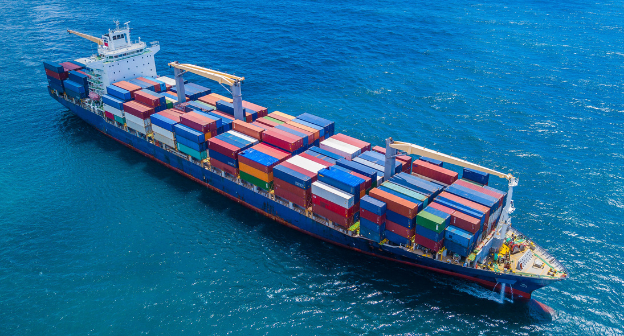
Chances are you’ve heard about the “supply chain crisis” that is being driven by the backup of more than 100 giant container ships off the ports of Long Beach and Los Angeles. While we believe it’s well-worth the time to read this insightful article from Yahoo Finance to better understand how this situation is affecting our economy with shortages, delays, and ultimately, inflation, we’ve synthesized the article into easily-digestible information bites.
Here are some key points from the article:
- Initially the supply chain was being stressed by factories in Asia closing down due to the pandemic, but now the pain point has shifted to ships – a massive, unprecedented traffic jam of the largest sea vessels is at the core of what’s being called “containergeddon.”
- It’s important to understand that 90% of the world’s global trade is shipped by sea, with 70% in containers.
- The U.S. has been increasing its outsourcing and reliance on imported goods. In 1985, we imported $293 million of goods from China. In August 2021 our imports from China totaled nearly $43 billion. Up 146-fold in 36 years.
- Companies and consumers increasingly count on just-in-time inventory systems to order goods. That makes for lower inventories, which reduces costs for U.S. companies and allows consumers immediate gratification from a global cornucopia of goods.
- The shipping business over the past decade has not been very profitable —until now which meant there was little investment in new ships. Meanwhile in the U.S., major railroads have been cutting costs and reducing headcount.
- What all the above means is that the global supply chain, particularly the part of it that connects Asia to the U.S., has been running at full capacity with no margin for error.
“When you have a problem anywhere in the supply chain, it’s going to have a ripple down effect, like playing dominoes.” If freight is late arriving at port, that means the time scheduled for the truck to pick it up has to be rescheduled, causing additional delays and costs due to having to store it in a temporary warehouse.
- During the pandemic, consumers pulled back on spending, so both supply and demand fell, ergo shipping volume and rates slumped. But not for long. By spring 2020, Americans started spending again, buying home and personal goods as factories in Asia came back online.
- Today, ports in the U.S., particularly on the West Coast and especially Long Beach-LA, where 36% of U.S. imports land, are unloading record amounts of cargo. And that’s where the traffic jam is the worst.
- Demand for cargo ships is off the charts. The cost of chartering a giant container ship is up 10X over the past year.
- Who’s going to pay for all of the above implications? We are of course, via higher priced goods which screams inflation. And we’re talking about non-transitory inflation here, as in real inflation that sticks around for years.
- While big companies can afford to charter their own ships to get their goods, smaller companies can't, which confers a big advantage to the big players at the expense of the little guys. Consider the economic implications of that.
- In the U.S., shippers, ports, truckers, and railroads don’t communicate with each other nearly enough or as much as in other countries. It’s also the case that truckers are overworked and overwhelmed. There are also reportedly now 16 containers waiting for every available truck at the port of LA. Railroads are scrambling to hire (back) workers.
- According to an LA Times article dated Oct. 19th, the major backlog of container ships at the ports of Los Angeles and Long Beach is the worst it’s ever been, with 100 ships waiting to enter and unload.
That number breaks the September 2021 record of 97 vessels. To put it into context, there would typically be about 17 ships at anchor in pre-pandemic times. The two Southern California ports account for 40% of all shipping containers entering the U.S.
- The crisis has brought out bad behavior and unintended consequences. First, fear of shortages has caused businesses big and small, never mind consumers, to engage in precautionary orders, (hoarding) in anticipation of delays. This of course only exacerbates the problem, by stuffing more goods in the supply chain.
- It’s time for the U.S. to rethink how to coordinate the supply chain. For some products, it’s time for us to produce them in the U.S.; for others, we can diversify the supply chain.”
- Experts say that the snarls could be with us through 2022.
What Does This All Mean For You From A Business Standpoint?
Considering all of this, it makes great sense to buy domestic and to order early, especially for your rigid plastic box and plastic container needs from Alpha Rho. If you have any questions or concerns about placing an order, simply contact us at detall@alpharho.com and we’ll be happy to help.
Why Choose Alpha Rho?
As the largest manufacturer of high-quality rigid plastic boxes in New England, Alpha Rho has been a leading supplier of injection-molded plastic boxes, with a reputation for providing dependable plastic packaging solutions for over 50 years. Our custom rigid plastic boxes -- compartment, hinged, friction fit, custom shapes – are used extensively in multiple industries, such as retail and hobby, food and confectionary, medical and industrial.
We offer reliable service to meet your needs. You can check out our list of products here, or request samples today and experience the quality of Alpha Rho’s products first hand.
